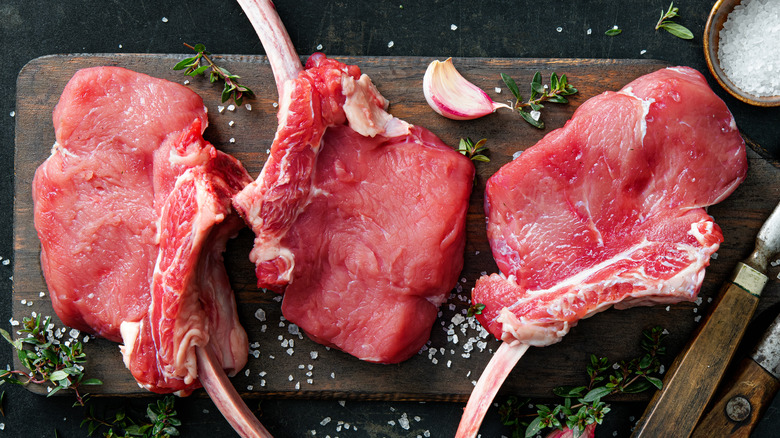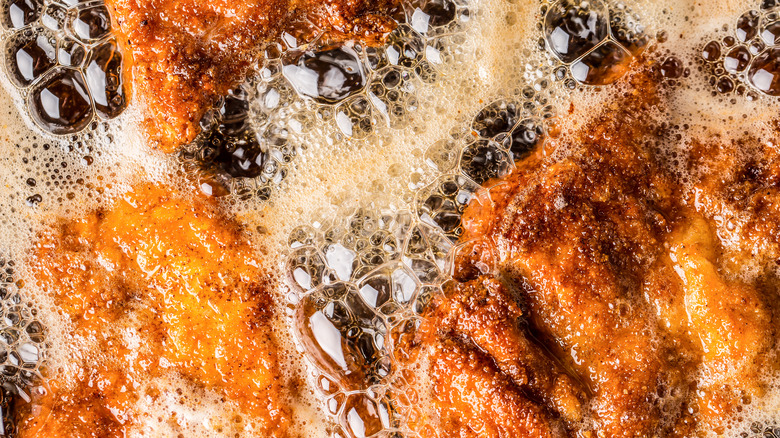The Cooking Method You Should Use For A Cut Of Veal
Though more common on European plates and menus, veal is still a relatively popular meat option in the U.S. Veal is derived from male beef calves — typically of the Holstein-Fresian breed, which are butchered between 3 to 14 weeks of age. Veal meat can be recognized as beef that's pale pink or white in color and fine-grained. Owing to the diet of mostly milk and the calf's young age, veal does not have time to develop any of the marbling fat so indicative of mature beef steaks. It is, therefore, a very lean meat, which makes it a great template for flavors and easy to cook.
This begs the question, if veal is so easy to cook, what's the best way to go about it? Because it's lean, veal needs fat and seasonings introduced in order to achieve the best possible flavor. Veal works well with a variety of different seasonings, such as thyme, rosemary, chopped parsley, garlic, and butter, and is very commonly breaded. Though there are several different cuts of veal, some of the most common are veal chops and steaks. Whether served with the bone in or out, veal chops and steaks are versatile cuts that work across a variety of different dishes. And cooking veal directly in cooking fat, in a method known as pan or shallow fat frying, is the best option for veal.
How to pan fry veal
To pan fry, you'll need a sizable frying pan (preferably cast iron), a splatter screen, and a decent amount of cooking fat. The fat provides flavor and seals in the moisture for the lean veal cut. You could use standard cooking fats such as butter or olive oil or opt for something a little more bold and upscale, like duck fat. As for prep, a short 20 to 30-minute brine bath can also help moisten and flavor the veal. It's also helpful to pound and tenderize your veal chop before you pan-fry it; not only will this level it to an even thickness, but it will also help cook the chop evenly and quickly.
When it's time to start cooking — heat the pan to medium-high to bring your chosen cooking fat to temperature. Then, add your veal and cook until both sides are golden brown, about 15 minutes. Feel free to continuously flip and turn the veal for even cooking and browning. When they look ready, check the internal temperature with a meat thermometer; the minimum temp for doneness is 145 degrees Fahrenheit, which is medium-rare.
Checking the temperature is particularly important if you've decided to bread your veal. Since it's difficult to tell doneness solely by the color of the coating, having that thermometer on hand is incredibly useful. Once your veal is finished, you can dress it with some juices from the pan or give it an extra dash of seasoning.

